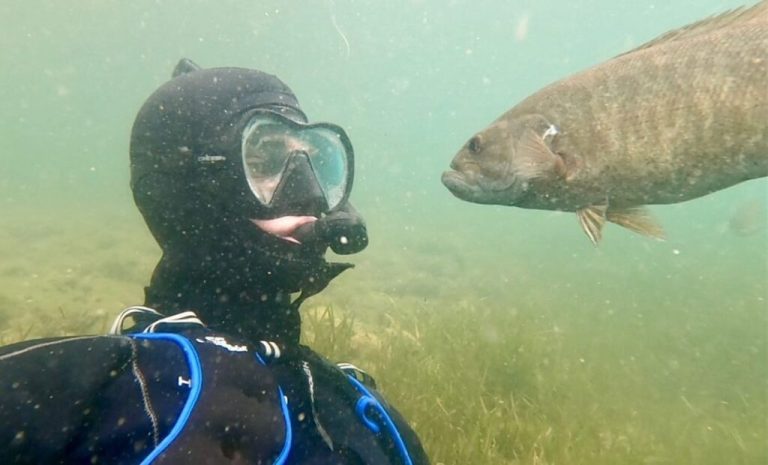It’s a human reality: We tend to remember negative experiences and stories over positive ones. Scientific research backs that up, but it also shows that we can adapt those memories by taking a more optimistic approach to our recollections.
All that’s to say, if you find yourself only thinking about the lows of 2024, Nice News is here to remind you of the highs — the environmental wins, the progress toward equality, medical innovations, and so much more. When you sit down and think about it, there really was a lot of good that happened this year; read on for eight of the highlights.
The First Sickle Cell Gene Therapy Patient Left the Hospital
At just 12 years old, Kendric Cromer made medical history this year. In May, he became the first person with sickle cell disease to undergo commercially licensed gene therapy, a newly approved treatment that could help cure the condition.
The preteen’s medical journey came less than six months after the Food and Drug Administration authorized two companies to sell gene therapy to those with the genetic blood disorder, which can cause extreme pain, inflammation, infections, and other medical issues.
“Sickle cell always steals my dreams and interrupts all the things I want to do,” Kendric, who was treated at Washington, D.C.’s Children’s National Hospital, told The New York Times in the spring.
Kendric began his final phase of treatment in September, and left the hospital about a month and half later — his completed therapy serving as a beacon of hope for the estimated 20,000 people with the most severe form of sickle cell.
College Tuition Went Down — And Free Tuition Programs Expanded

There’s lots of talk about rising tuition and the increasing inaccessibility of higher education in the United States. But amid all that noise, it seems that the average cost of college has been quietly trending downward — a welcome surprise for prospective students and parents.
An October report from the College Board found that the average in-state tuition for a four-year public university is $11,610 a year when adjusted for inflation, compared to $12,830 five years ago. For private schools, the net price (taking financial aid into account) is $16,510, down from $18,340 in 2019.
Beyond that, headlines about free tuition programs abounded this year. New York’s Cooper Union for the Advancement of Science and Art reinstated its long-held tradition of comped tuition and MIT extended its financial aid to offer free tuition to undergraduates with a family income below $200,000.
A major donation from Mike Bloomberg will also cover tuition for most medical students at Johns Hopkins University, and those at the Albert Einstein College of Medicine in the Bronx will graduate debt-free in perpetuity thanks to a former professor’s philanthropy.
Women’s Sports Took Center Stage

If there ever was a year of women’s sports, it’s 2024. So much so that it’s difficult to condense all the progress made to this one short section.
There was Simone Biles, who returned to the Olympic stage ready to win — and came back from Paris not only having earned a slew of new gymnastics medals, but also having made major strides when it comes to reducing the stigma around athlete mental health.
Then there were WNBA rookies Caitlin Clark and Angel Reese, who made women’s basketball the thing to watch — in fact, the league delivered its most-watched regular season in 24 years.
But it wasn’t just the individual athletes who cemented this as a banner year. The first stadium built specifically for a National Women’s Soccer League team opened in Kansas City, Missouri; women’s sports bars popped up across the country; the WNBA announced multiple new expansion teams; and financial, attendance, and viewership records were all smashed. We can’t wait to see what 2025 holds.
Renewing a Passport Got Easier
One of the (arguably) most annoying government-related tasks got a bit easier this year: The State Department cleared its passport application backlog and then announced an online renewal program.
The beta program launched in June, and then it was fully rolled out to the public in September. “The goal of online passport renewal is to save Americans time and effort,” one senior official said in June, per ABC News.
The Largest Dam Removal Project Reached Completion

In a momentous victory for Indigenous tribes and environmentalists, the nation’s largest-ever dam removal project reached completion this year. The last of the four dams in the Klamath River along the California-Oregon border was demolished on Aug. 28, opening the door for a thriving salmon population.
“The biggest thing for me, the significance of the dam removal project, is just hope — understanding that change can be made,” Brook Thompson, a member of the Yurok Tribe, told the Los Angeles Times.
The milestone followed a two-decade-long campaign to save the Klamath River after an estimated 70,000 salmon perished due to toxic algae in 2002. Aside from driving the species to near extinction, this also prevented local Native tribes from engaging in core parts of their culture and fishing traditions.
But restoration is now underway as the river flows freely again, reopening up to 400 miles of salmon spawning and nursery habitats. By October, Chinook salmon were swimming upstream again in a previously blocked area.
Opioid Deaths Dropped
Opioid addiction has been a crisis in the U.S. for years now, but 2024 seems to have marked a turning point for the better. Nabarun Dasgupta, an expert at the University of North Carolina, released an analysis in September showing an “unprecedented” decline in opioid deaths.
His report indicated a national street drug death drop of around 15% — higher than the CDC’s estimate of 10.6%, a rate already being celebrated as a win. That corresponds to 20,000 fewer deaths in 2024 than in 2023. “This is exciting,” Dr. Nora Volkow, head of the National Institute on Drug Abuse, told NPR at the time. “This looks real. This looks very, very real.”
It’s not just researchers who are seeing the trend: The people working to fight the epidemic on the ground have noticed changes, too. “A year ago when overdose deaths continued to rise, I was really struggling with hope,” said Brad Finegood, who directs the overdose crisis response in Seattle. He added: “Today, I have so much hope.”
Toxic Emissions From Oil Refineries Are “Down Significantly”

Oil refineries are a notorious source of harmful pollutants. But over the years, the Environmental Protection Agency has put regulations and oversight in place to monitor emissions — and according to an analysis released by the Environmental Integrity Project in May, these efforts seem to be working.
The report from the watchdog group showed that oil refineries’ emission of benzene, a chemical known for causing cancer and other health issues, has gone “down significantly” in recent years. Of the 115 refineries in the U.S., only six had average annual benzene levels exceeding the EPA’s “action level” in 2023, a decrease from 12 at the end of 2020.
“It’s a big improvement, and benzene is especially nasty,” Eric Schaeffer, the group’s executive director and a former senior EPA enforcement official, told The Washington Post.
The outlet called the reduction an “environmental success story” — one that could also potentially curb cancer rates in the disadvantaged communities that are most affected by pollution. “We complain a lot,” Schaeffer said. “It’s our job to point out problems that need attention … but we wanted to recognize a positive trend.”
Less Invasive Cervical Cancer Screenings Rolled Out

As of 2021, 1 in 4 women in the U.S. were not up to date on their cervical cancer screening. Though the disease is preventable, and when caught early has a five-year relative survival rate of 91%, it’s consistently the second-leading cause of cancer death among women aged 20-39 worldwide.
Screenings often require a pap smear, which is performed with a speculum and can be a source of fear, pain, and embarrassment, leading some women to avoid the procedure. Other barriers include lack of time, access, and information.
But the medical community made major headway this year on making screenings less invasive and more accessible. In November, the first self-tests for HPV — the single most important risk factor in developing cervical cancer — rolled out at U.S. doctor’s offices, offering a speculum-free, pap-smear alternative.
Earlier in the year, Teal Health, a cervical cancer screening startup backed by Serena Williams, was granted Breakthrough Device status by the U.S. Food and Drug Administration for its innovative, at-home screening wand. Designed for a wide range of bodies and health literacy levels, the device measures less than an inch in diameter and would enable users to self-collect vaginal cells at home in under five minutes.
RELATED: Nice News 2024 Holiday Gift Guide: Experiential Presents for Making Priceless Memories











